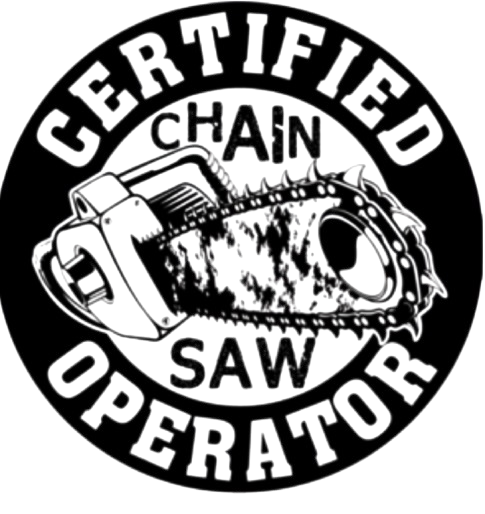5 Signs Your McIntosh County Trees Need Professional Attention
5 Warning Signs Your McIntosh County Trees Need Immediate Professional Attention
Homeowners throughout McIntosh County often overlook subtle signs that their trees require professional intervention until problems become expensive emergencies. At Go Green Lawn & Tree Services, we've helped countless property owners identify potential hazards before they escalate into costly damage or safety risks.
Understanding these warning signs can protect your family, property, and significant investment in your landscape. When you notice any of these indicators, calling (918) 407-0355 connects you with certified professionals who can provide immediate assessment and solutions.
1. Visible Structural Damage or Decay
Cracks in the trunk, especially those that extend deep into the wood, indicate serious structural compromise. These vulnerabilities often develop gradually but can lead to sudden tree failure during Oklahoma's severe weather events.
Fungal growth on the trunk or major branches signals internal decay that weakens the tree's structural integrity. Bracket fungi, mushrooms, or other growths emerging from bark cracks create visible evidence of internal decomposition that requires professional evaluation.
Hollow areas or cavities in the trunk, whether caused by disease, insect damage, or previous injuries, significantly reduce the tree's ability to withstand wind loads and should be assessed immediately.
2. Root System Problems
Exposed roots that appear damaged, diseased, or severed indicate potential stability issues. Construction activities, soil grading, or natural erosion can compromise root systems in ways that aren't immediately obvious but create long-term hazards.
Soil heaving or sinking around the tree base suggests root movement that could indicate the tree is loosening from its foundation. This is particularly concerning in McIntosh County's clay soils, which expand and contract significantly with moisture changes.
Our professional tree assessment services include comprehensive root system evaluation to identify potential stability issues before they become dangerous.
3. Dead or Dying Branches
Large dead branches pose immediate falling hazards, especially during storms or high winds. These branches can fall unpredictably, potentially causing property damage or injury to people below.
Branches that fail to produce leaves during growing season or show premature autumn coloration indicate health problems that could spread throughout the tree. Early identification allows for targeted treatment that might save the entire tree.
Multiple dead branches concentrated in one area often indicate disease, pest infestation, or environmental stress that requires professional diagnosis and treatment.
4. Unusual Growth Patterns
Sudden appearance of numerous small shoots growing from the trunk or base of the tree indicates stress responses that suggest underlying health problems. These "suckers" or "water sprouts" divert energy from healthy growth and indicate the tree is struggling.
Significant leaning that develops gradually or suddenly poses immediate safety risks. While some trees naturally grow at angles, sudden changes in position indicate root or structural problems requiring immediate professional attention.
Asymmetrical crown development or extensive branch die-back on one side suggests environmental stress, disease, or root damage that could compromise the entire tree's stability.
5. Pest Infestation and Disease Symptoms
Extensive insect activity, particularly wood-boring beetles or termites, can quickly compromise tree health and structural integrity. Signs include small holes in bark, sawdust accumulation, or unusual insect activity around the tree.
Unusual bark conditions such as peeling, discoloration, or oozing sap can indicate disease or pest problems that require immediate professional intervention. Early treatment often prevents spread to other trees on your property.
Leaf abnormalities including discoloration, unusual spots, premature dropping, or stunted growth patterns often indicate systemic problems that benefit from professional diagnosis and treatment.
Environmental Factors Affecting Tree Health
McIntosh County's specific environmental conditions create unique challenges for tree health. Prolonged drought stress, soil compaction from construction activities, and damage from severe weather events can all contribute to declining tree health.
Understanding how these factors interact helps homeowners recognize when professional intervention becomes necessary. Our comprehensive storm damage assessment services evaluate both obvious damage and subtle stress indicators that could lead to future problems.
The Cost of Waiting
Delaying professional assessment when warning signs appear typically results in more extensive and expensive remediation needs. Early intervention often preserves valuable trees through targeted treatment, while waiting until problems become severe frequently necessitates complete removal.
Insurance considerations also favor proactive tree care. Many policies provide better coverage for preventive maintenance than for damage caused by neglected tree hazards.
Professional assessment provides documentation of tree condition that can be valuable for insurance claims and helps establish appropriate maintenance schedules to prevent future problems.
Don't wait until warning signs become emergencies. Contact Go Green Lawn & Tree Services at (918) 407-0355 for comprehensive tree health assessment that protects your McIntosh County property and ensures your family's safety.
